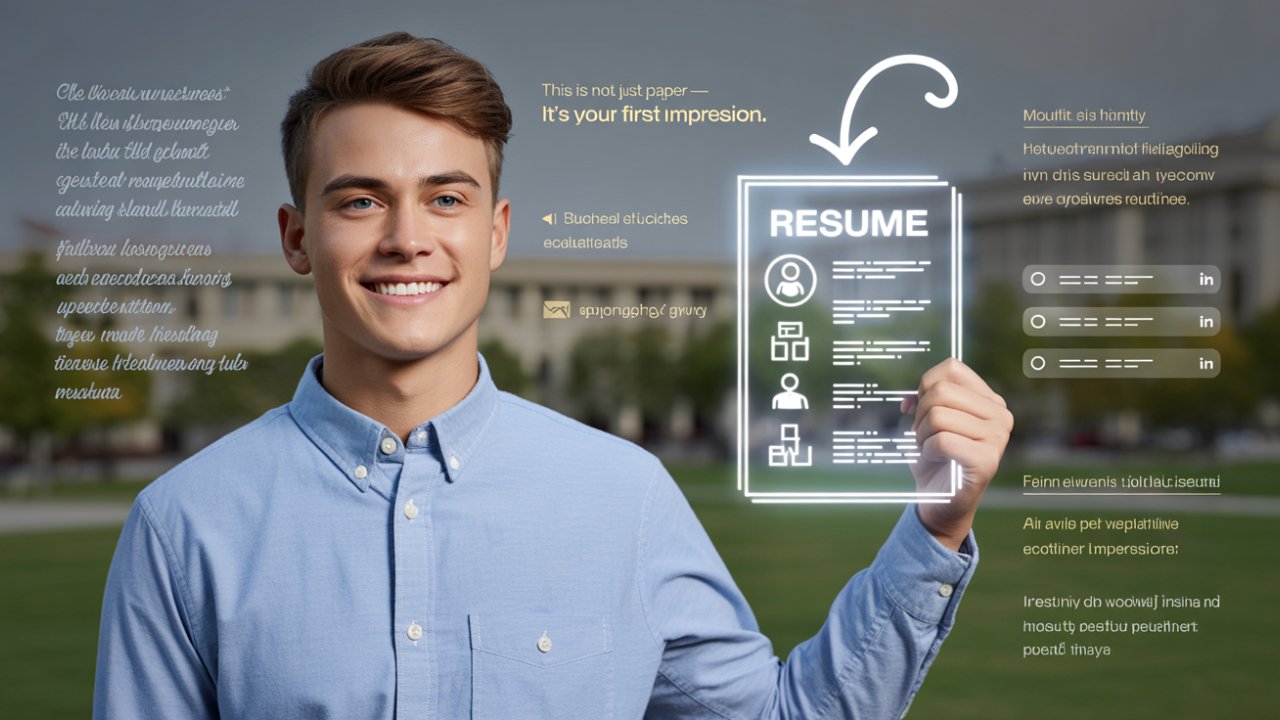Creating a resume can be especially challenging for people who don’t have any work experience yet. You may be wondering – where to start, what to write, and what format to use? Most online tips exaggerate professional experience and may not be relevant to your situation. Even if the hope is on the newbie, a blank section can make you feel nervous.
Don’t worry – in this guide, we’ll show you how to create a killer resume, even with no work experience.
You’ll learn:
- How to choose a resume format when you have no experience
- Four sections that can replace work experience and help you stand out from the crowd
- Two no-experience resume examples that can get you a job
Resume Format – This Will Work Whether You Have Any Experience or Not
The best format when you have no job is the reverse-chronological one. Your most up-to-date information comes first. Header, then education, then new sections—internships, projects, activities—then skills. Simple, practical, and recruiters love it.
Header – Introduce Yourself First
Write Contact Information
First in the header, add your name, phone number, email, and a link to LinkedIn or a portfolio website, if you have one. The email should be expert and official—firstname.lastname@gmail.com sounds straightforward and effective.
Pro tip: Double-check your information to make sure there are no mistakes—or else no one will contact you.
Resume Objective (Optional)
Right after the header, you can write a short introductory sentence, called a resume objective. Include:
- What field you’re speaking from
- What skills you have
- Why you’re applying for this job or company
Example:
“Fresh computer science graduate applying for a junior developer role at XYZ company. Strong knowledge in Java and Python, team lead experience in university projects, and problem-solving abilities.”
This section is very short—3–4 sentences—but important—it provides an essential introduction to your professional identity.
Education – This Is the Most Substantial Experience You Have Right Now
When there’s no experience, education is the star section of your resume. Write carefully:
- Degree/Course Name
- Institution Name
- Study Period
- Include GPA, Honors, Workshops, Exchange Programs, etc. if any
College Graduate Example:
BA in Computer Science
XYZ University, 08/2018–05/2022, GPA: 3.8/4.0, Honors
If student is currently studying:
BTech in Electrical Engineering
XYZ College, 07/2021–Present
If only 10th pass, show it at the top.
Four Best Sections – If You Don’t Have Work Experience, Include This
Internships
If the internship has made you do some work with your hands, then definitely include it:
Marketing Intern
ABC Company, 06/2021–08/2021
- Increased engagement by 25% by creating social media posts
- Increased traffic by 20% by writing blog posts
Highlight work similar to the position you are applying for.
Extra-Curricular Activities
Which show your team skills, leadership and productivity:
Vice-President, Robotics Club
XYZ College, 09/2020–05/2022
- Won the college robotics competition
- Helped a team of 15 members complete a successful project
These show that you are a person of dedication and integrity.
Volunteering
Volunteering shows your social attitude:
Library Volunteer
ABC Library, 03/2020–06/2021
- Organized 500+ books
- Conducted language workshops for children
Projects
School, college or self-organized projects:
Personal Budget Tracker App
School/college project, 01/2022–04/2022
- Created a web app in Python and Flask
- Added budget alert feature, which makes expense management easier
If you have a GitHub or blog link, please share it.
Skills Section – Bold, Relevant and Hard
Prioritize hard skills—those mentioned in the job description:
Skills
- HTML, CSS, JavaScript – Intermediate
- Python – Intermediate
- MS Office – Advanced
- Teamwork, Communication, Time Management – Soft skills
Adjust your resume as the job description changes.
Additional Sections – Make Your Resume Even Better
- Hobbies & Interests – Such as writing blogs, participating in cultural activities
- Languages – If you know another language, add: Hindi (mother tongue), English (excellent), Spanish (moderate)
- Awards & Certifications – If you have an online course, competition win, or workshop certificate, add it
Things to Consider While Preparing Your Resume
- Size – Keep it to one page.
- Font – Simple, 10–12pt.
- Spelling and Grammar – Mistakes can create a negative image for you—and your professional image.
- Think from the Recruiter’s Point of View – What are they looking for—skills, fit, talent.
How to Update Experience If It Comes Up?
It is always possible to do an internship, project, or job at a small startup. Add it to your resume right away:
- Create new sections
- Update achievements and skills
- If you did something well, highlight it
What to Do After Sending the Resume?
- Cover Letter – Short, focused, and persuasive to the role
- LinkedIn Profile – Header, objective, complete education and skills section
- Networking – Connect with professors, peers, and experts on LinkedIn
Conclusion
- Format – Reverse-chronological
- Sections – Header, Education, Internship-Project-Activity, Skills
- Proofread – Mistakes can make your efforts go in vain
- Update – Update your resume as you gain experience
This way, you can prepare for a job by creating a great and confident resume—even if you don’t have any work experience yet.
